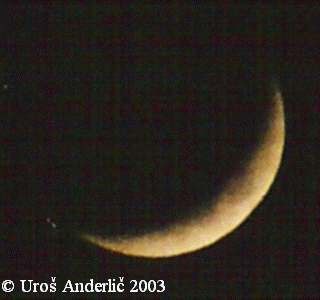
First Lunar Crescents
for
Babylon (-2000 to 1) and Nineveh (-700 to -599)
Uroš Anderlič, Maria G. Firneis
Babylonian’s position in absolute chronology is established via the citations of astronomical phenomena on cuneiform tablets and as astronomical phenomena repeat more or less cyclically it is of vital concern to fit these dates into the framework of absolute astronomical chronology. The first heliacal setting of the lunar crescent in a synodic month is called first lunar crescent and has been calculated - using the Anderlič-Firneis criteria - for geographical longitudes and latitudes of Babylon (-2000 to 1) and Nineveh (-700 to -599). Further, data of the first lunar crescent for Babylon and Nineveh have been compared with each other as well as a close comparison between L. Fatoohi’s data and the Anderlič data of the first lunar crescent for Babylon are given.

For the computation of the first lunar crescent along the western horizon in the evening twilight the program package UraniaStar (version 1.1, November 1995) by Michael Pietschnig and Wolfgang Vollmann has been used that is mainly based on the algorithms described in the book Astronomical Algorithms (Willmann-Bell, Inc.; Richmond, 1991) by Jean Meeus.
|
|
|
||
Some points should be stressed:
- The first lunar crescent can be visible at sunset and hence, all values are given for the time at the beginning of civil twilight except those which are marked as values for the time at the end of civil twilight and are used for comparison.
- The astronomical year and the historical year are equal for positive values and A.D. (for instance: 759 equals A.D. 759), but unequal for negative values and B.C. (for example: -1538 equals 1539 B.C.) for the historical counting has no year 0 as the astronomical counting has and hence, the astronomical year 0 equals the historical year 1 B.C. Further, the Julian calendar has been used because in this treatise all first lunar crescents occur before 5th October A.D. 1582 in the Julian calendar.
- Two lower boundaries for the altitude of the moon at the end of civil twilight have been chosen (i.e. 1.90° and 4.00°) and therefore, dates of the first lunar crescent that show an altitude of the moon at the end of the civil twilight below the amount of 4.00° are marked with "n" (i.e. next day). This means that the moon under not optimal conditions probably was not observed and hence, in the Babylonian cuneiform texts the first lunar crescent for that very day was recorded on the next day.
- For calculations back to the past it is important to consider the changes in the rate of the Earth’s rotation due to tides and other causes and hence, the Earth’s rotational clock error results in Delta T (i.e. ΔT = TT – UT; TT…Terrestrial Time, UT…Universal Time). The diagram shows ΔT during two millennia compared between the data obtained by Fred Espenak and by the program package UraniaStar.
Permission
is freely granted to reproduce this data when accompanied by an acknowledgment.